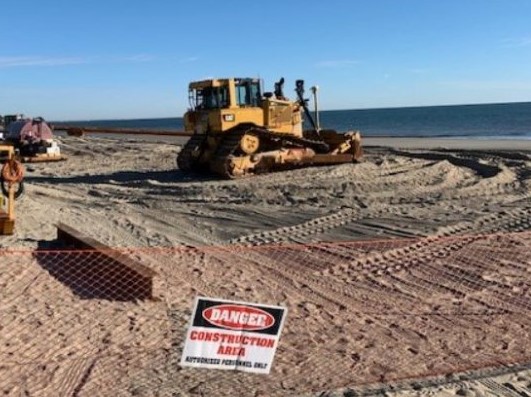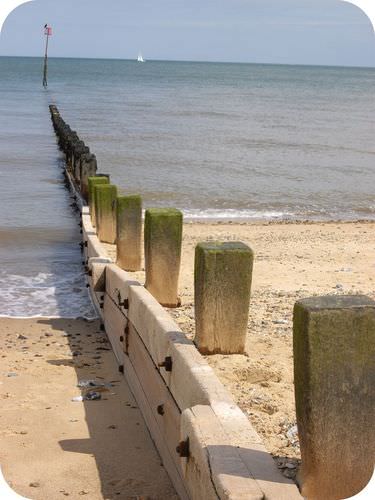The 9-Minute Rule for Shore Protect Team
Table of ContentsAll About Shore Protect TeamLittle Known Questions About Shore Protect Team.10 Easy Facts About Shore Protect Team ShownThe Ultimate Guide To Shore Protect TeamEverything about Shore Protect TeamSome Known Details About Shore Protect Team Get This Report on Shore Protect Team
Reduction in residential property value: As the area tourism is impacted by erosion, so after that is the economic situation. Purchasers are less most likely to search for a coastline residence that might be destroyed at any type of minute by the impending flooding and erosion emergency. Subsequently, building value can go down immensely and affect the whole region.Whether a coastline is just little and crowded or has to close totally for the security of the ecological community and close-by homes, this greatly affects tourist. Consequently, neighborhood economic climates are influenced (http://qooh.me/shrprtcttm). Threat of injury: The raised threat of flooding and structural failings triggers a raised risk of injury to close-by visitors and neighborhood participants

is home to more than 84,240 miles of shoreline with 41% of it subjected to the open ocean. Coastal engineers supervise of protecting the shore versus changes by lessening the damaging impacts of both natural and synthetic events. Coastline stablizing is straight pertaining to their job. Waterside hotels: Due to the fact that shoreline erosion effects tourist, it impacts the success of waterside resorts.
Getting The Shore Protect Team To Work
Coastal industrial organizations: No visitors indicates no service. Coastal state parks: State parks that exist along shorelines are at risk of damage.
Soft stabilization is a much better service for the atmosphere and more lasting overall. Hard stabilization makes use of manufactured structures as protection to manage disintegration. Generally, these structures are mounted at best angles or parallel to stop sand motion and decrease the pressure of waves. The majority of kinds of tough stablizing like seawalls and sheet metal are not optimal for shoreline stablizing.
The Main Principles Of Shore Protect Team
There's additionally not nearly enough proof of their effectiveness depending upon the type of coastline and local problems. Tough stablizing methods tend to be a lot more challenging to set up and do not match the all-natural visual, standing out like a sore thumb and hurting regional environments in lots of situations. Beach nutrients is the procedure of including lost sand and sediment back to beaches after erosion has occurred.
TrapBags aid in the process of coastline sustenance by securing all-natural environments and permitting plants to expand. While this procedure can be expensive and is not irreversible, the pros often tend to surpass the cons. TrapBag obstacles offer several residential properties that make them excellent for coastal and riverbank erosion protection. They're: Environmentally friendly: You can use native soil both to border and to fill up the TrapBags.

The Single Strategy To Use For Shore Protect Team
They can likewise be mounted without any kind of hefty machinery. Budget friendly: TrapBags are excellent for both tiny and big areas of coastline.
Incorporated with a high building and construction expense, this has resulted in boosting use of various other soft design coastal monitoring alternatives such as beach replenishment. Seawalls are created from different materials, a lot of generally strengthened concrete, boulders, steel, or gabions. Other feasible building materials include plastic, wood, aluminum, fiberglass composite, and eco-friendly sandbags constructed from jute and coir. The appropriate seawall layout relies upon location-specific facets, consisting of bordering disintegration processes. There are 3 major sorts of seawalls: vertical, curved, tipped, and piles (see table listed below). A report published by the United Nations Atmosphere Program (UNEP) recommends that the tidal wave of 26 December 2004 created less damages in the areas where all-natural obstacles were present, such as mangroves, coral reefs or coastal greenery.
Natural barriers, such as reef and mangrove woodlands, prevent the spread of tsunamis and the circulation of coastal waters and alleviated the flooding and rise of water. A cost-benefit approach is an effective method to establish whether a seawall is suitable and whether the advantages deserve the expenditure.
The Basic Principles Of Shore Protect Team
A seawall is a static attribute which can clash with the dynamic nature of the coast and impede the exchange of sediment in between land and sea. Benefits and drawbacks of seawalls according to Short (1999) Benefits Drawbacks Lengthy term service in contrast to soft coastline nourishment (https://www.localshq.com/directory/listingdisplay.aspx?lid=114650).

This can create coastlines to dissipate, providing them useless for beach goers. Generally, seawalls can be an effective way to manage coastal disintegration, but just if they are built well and out of products that can stand up to the force of continuous wave power. Some understanding is needed of the coastal processes and morphodynamics particular to the seawall location.
10 Easy Facts About Shore Protect Team Described
Combined with a high construction expense, this has led to raising usage of other soft engineering coastal administration choices such as beach replenishment. Seawalls are created from different materials, a lot of generally enhanced concrete, boulders, steel, or gabions. Various other feasible construction products include vinyl, timber, light weight aluminum, fiberglass composite, and eco-friendly sandbags constructed from jute and coir. The suitable seawall layout relies on location-specific aspects, consisting of bordering disintegration processes. There are three major kinds of seawalls: vertical, rounded, tipped, and mounds (see table listed below).
All-natural barriers, such as reef and mangrove forests, protect against the spread of tsunamis and the flow of coastal waters and minimized the flood and surge of water. A cost-benefit method is an efficient means to figure out whether a seawall is proper and whether the benefits are worth the expense.
See This Report on Shore Protect Team
A seawall is a fixed function which can contravene the vibrant nature of the coast and restrain the exchange of debris between land and sea. The table below sums up some favorable and negative impacts of seawalls which can be used when contrasting their performance with other coastal monitoring alternatives, such as beach nourishment. [] Benefits and negative aspects of seawalls according to Short (1999) Benefits Downsides Long-term remedy in contrast to soft beach nutrients. bulkhead repair.

This can trigger beaches to dissipate, providing them ineffective for beach goers. Typically, seawalls can be an effective way to manage seaside disintegration, but just if they are constructed well and out of materials that can stand up to the pressure of continuous wave energy.